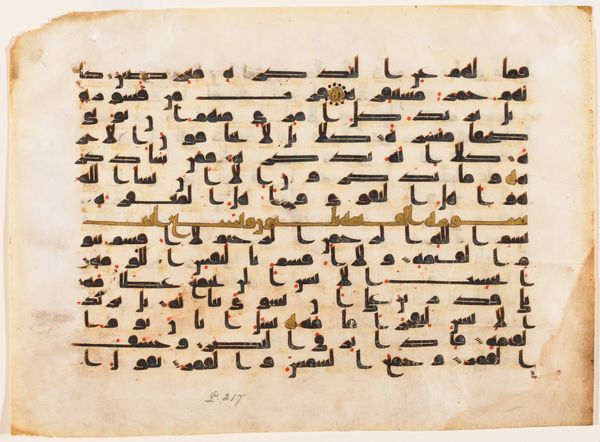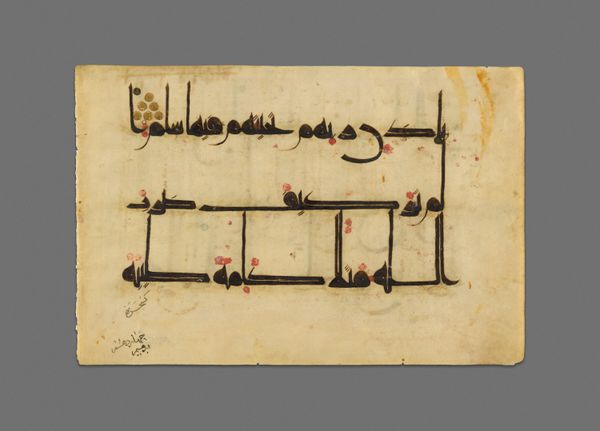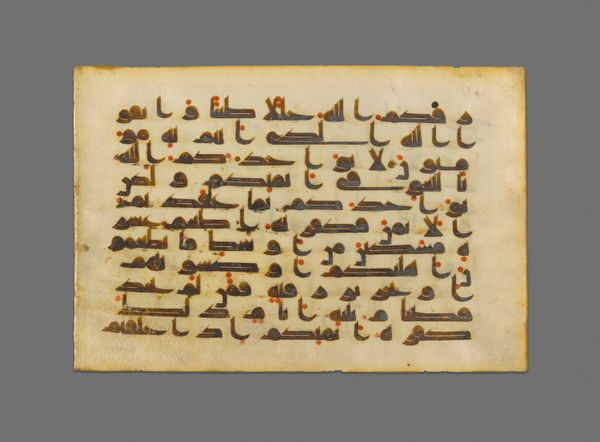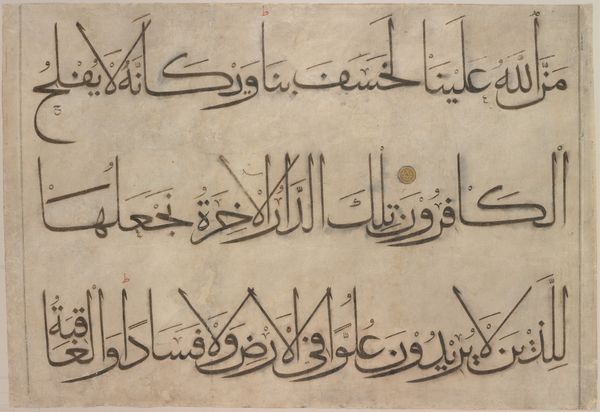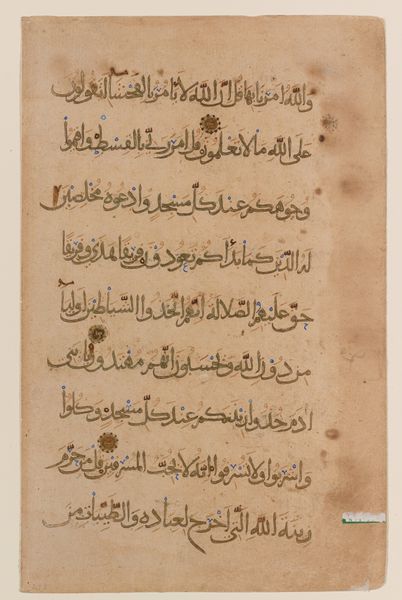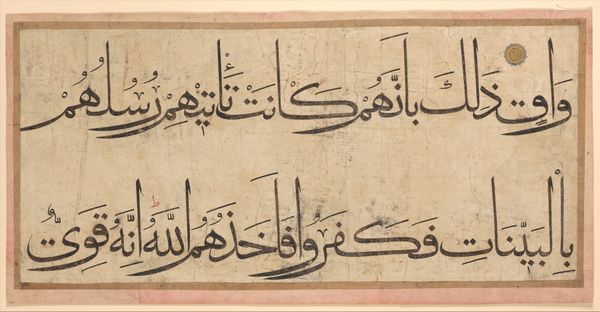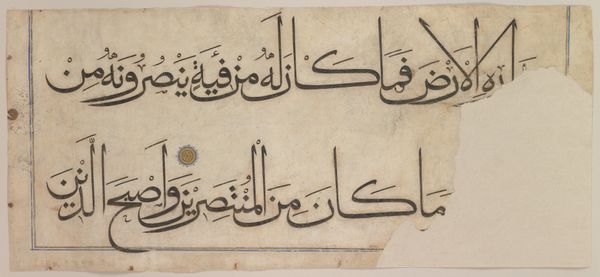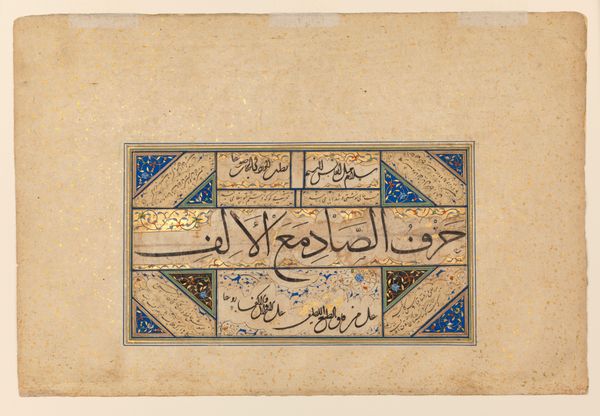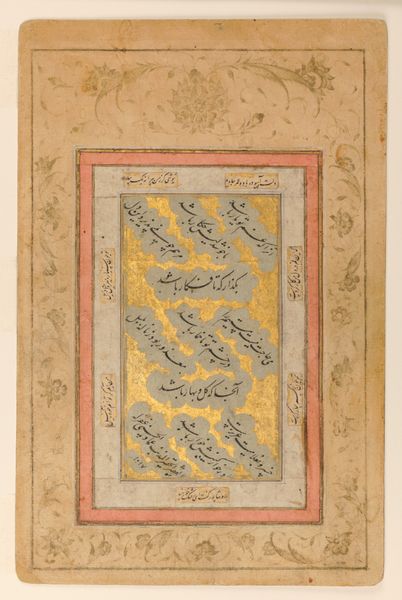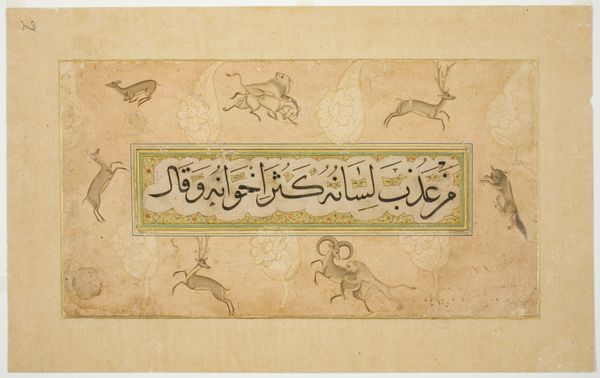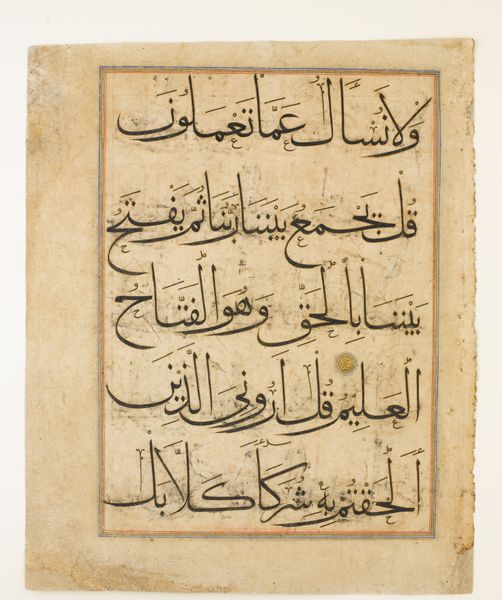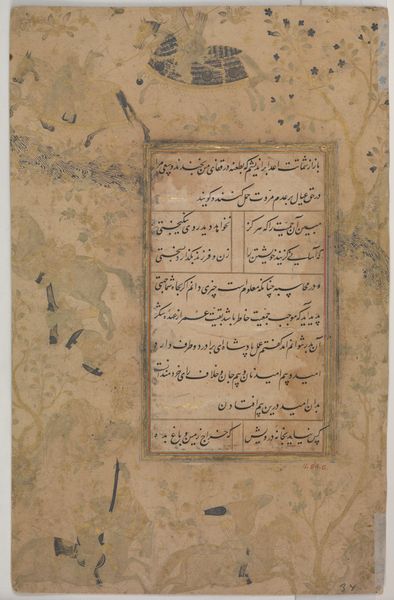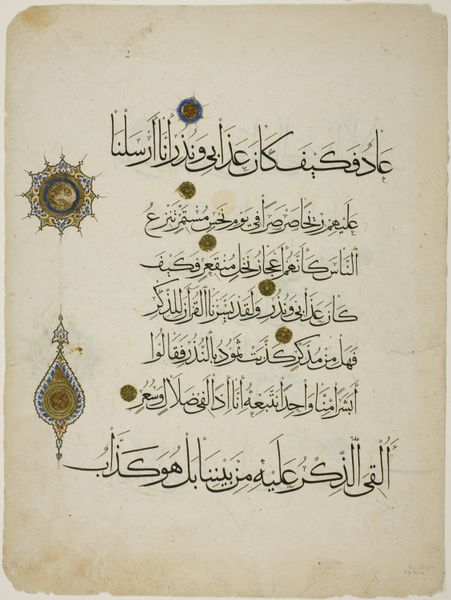
textile, paper, ink
#
medieval
#
water colours
#
narrative-art
#
asian-art
#
textile
#
paper
#
ink
#
geometric
#
islamic-art
#
calligraphy
Dimensions: 13 x 8 1/8 in. (33.02 x 20.64 cm) (sheet)
Copyright: Public Domain
Curator: Isn't this just stunning? Take a look at this page from the Qur'an, dating back to around 993, crafted by Muhammad ibn Ahmad ibn Yasin. The dark ink on this aged paper sings with such history. Editor: It certainly feels weighty. My first impression is of the careful intention, like each curve of the lettering is a meditation. There's such a stillness and rhythm radiating from it, even without knowing the meaning. Curator: Exactly! Calligraphy, particularly in Islamic art, transcends mere writing; it becomes an act of devotion. Think about the political weight this manuscript carries, each owner, each location change adding new interpretations over centuries. These weren't just pages; they were cultural artifacts, read aloud in public spaces, and imbued with sacred power. Editor: So the text, the geometric design of the page…it's all purposefully composed to deliver not just a message, but an experience. It makes you think about literacy itself – who had access to this knowledge, who controlled its dissemination? And these decorative elements that pop of the page. How would they be used to differentiate scribes or to make each iteration distinct? Curator: Precisely. The materials alone - the quality of the ink, the paper – would have signaled status. Imagine the training involved in mastering this script. And let's remember this manuscript likely witnessed political upheavals, scholarly debates, shifts in power—it’s practically a silent observer of history. Editor: And considering it’s over a thousand years old, that this survived intact…it does speak to something fundamental about preserving knowledge and beliefs. Curator: Yes, a testament to cultural perseverance. It's a privilege to be in its presence. Editor: I concur; it provokes a deep sense of reverence, for sure. A good reminder that art, text, objects they all tell a story and its up to us to decide how we interpret the various voices it produces.
Comments
minneapolisinstituteofart almost 2 years ago
⋮
This double-sided page was once part of a monumental Qur’an consisting of over 1,300 pages in four volumes. The calligrapher Muhammad ibn Ahmad ibn Yasin, whose signature appears on the Qur’an, demonstrates how copying and adorning the word of God would have been a form of both religious and artistic expression. He was especially skilled in exploiting the qualities of the qalam, a reed pen that was cut at an angle so that the ink could be applied at different pressures and slants. These four well-ordered lines are written in an innovative, transitional script called “broken cursive,” noted for its sharp angles and variety in the size of its letters and width of its strokes. In this rhythmic composition, the long letters below the baseline visually propel the eye forward through the text (Arabic text is read right to left). The text itself is from chapter 54 of the Qur’an; each of the four verses (27–31) is marked with a gilded rosette, while the medallion in the margin marks the end of 10 verses.
Join the conversation
Join millions of artists and users on Artera today and experience the ultimate creative platform.
